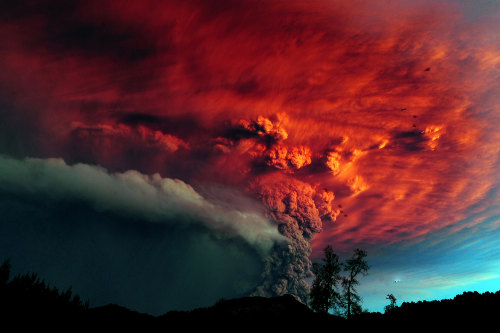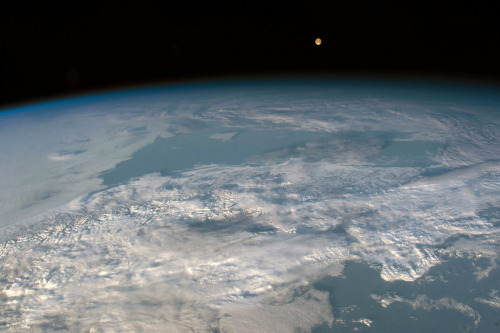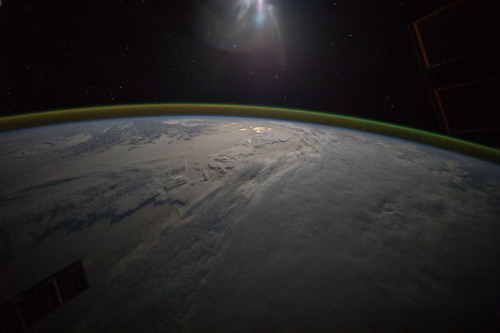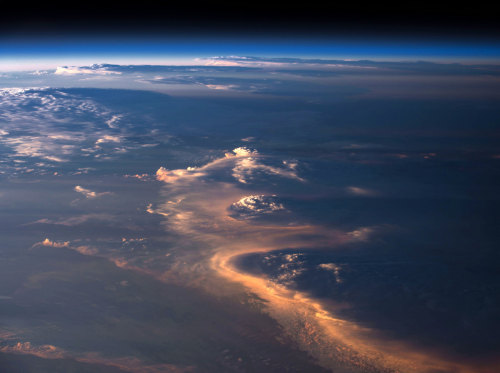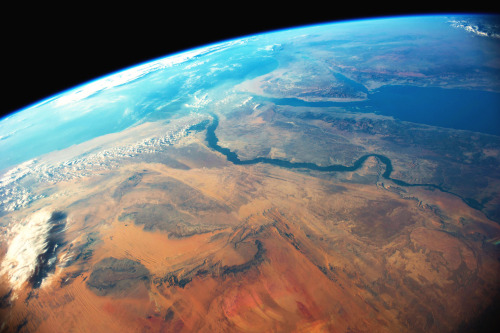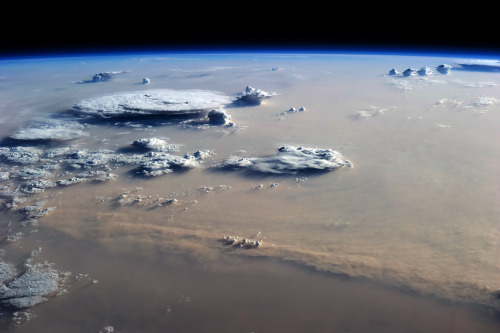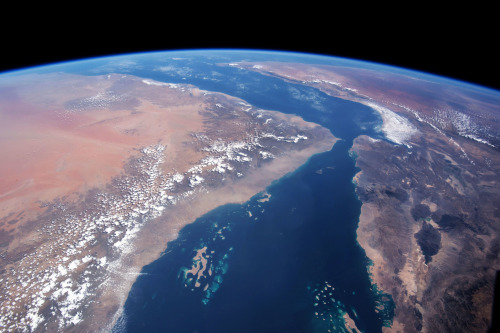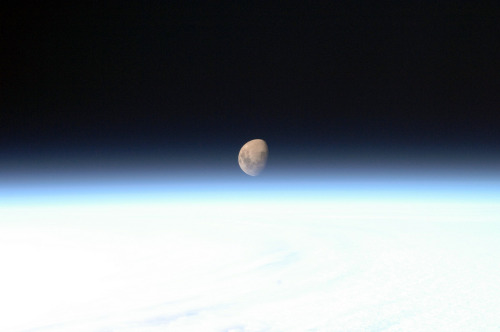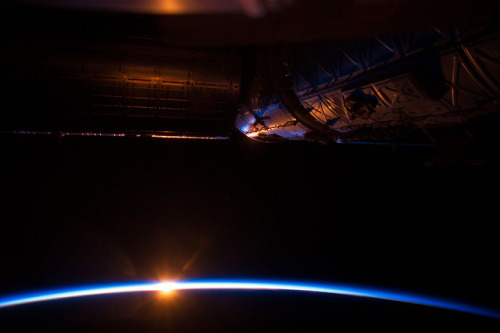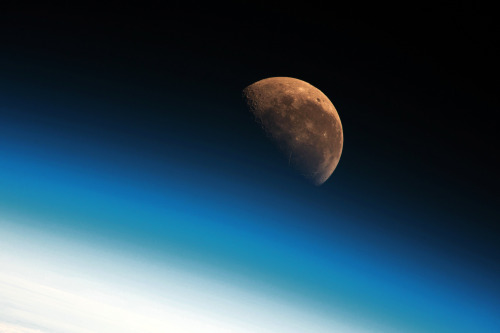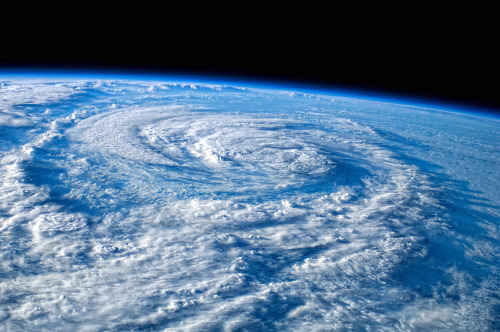Sleep Is Your Superpower | Matt Walker
Sleep is your superpower | Matt Walker
Sleep is your life-support system and Mother Nature’s best effort yet at immortality, says sleep scientist Matt Walker. In this deep dive into the science of slumber, Walker shares the wonderfully good things that happen when you get sleep – and the alarmingly bad things that happen when you don’t, for both your brain and body. Learn more about sleep’s impact on your learning, memory, immune system and even your genetic code – as well as some helpful tips for getting some shut-eye.
More Posts from Study-astronomy-biology-ref and Others
Largest Batch of Earth-size, Habitable Zone Planets
Our Spitzer Space Telescope has revealed the first known system of seven Earth-size planets around a single star. Three of these planets are firmly located in an area called the habitable zone, where liquid water is most likely to exist on a rocky planet.

This exoplanet system is called TRAPPIST-1, named for The Transiting Planets and Planetesimals Small Telescope (TRAPPIST) in Chile. In May 2016, researchers using TRAPPIST announced they had discovered three planets in the system.

Assisted by several ground-based telescopes, Spitzer confirmed the existence of two of these planets and discovered five additional ones, increasing the number of known planets in the system to seven.

This is the FIRST time three terrestrial planets have been found in the habitable zone of a star, and this is the FIRST time we have been able to measure both the masses and the radius for habitable zone Earth-sized planets.
All of these seven planets could have liquid water, key to life as we know it, under the right atmospheric conditions, but the chances are highest with the three in the habitable zone.

At about 40 light-years (235 trillion miles) from Earth, the system of planets is relatively close to us, in the constellation Aquarius. Because they are located outside of our solar system, these planets are scientifically known as exoplanets. To clarify, exoplanets are planets outside our solar system that orbit a sun-like star.

In this animation, you can see the planets orbiting the star, with the green area representing the famous habitable zone, defined as the range of distance to the star for which an Earth-like planet is the most likely to harbor abundant liquid water on its surface. Planets e, f and g fall in the habitable zone of the star.
Using Spitzer data, the team precisely measured the sizes of the seven planets and developed first estimates of the masses of six of them. The mass of the seventh and farthest exoplanet has not yet been estimated.

For comparison…if our sun was the size of a basketball, the TRAPPIST-1 star would be the size of a golf ball.
Based on their densities, all of the TRAPPIST-1 planets are likely to be rocky. Further observations will not only help determine whether they are rich in water, but also possibly reveal whether any could have liquid water on their surfaces.
The sun at the center of this system is classified as an ultra-cool dwarf and is so cool that liquid water could survive on planets orbiting very close to it, closer than is possible on planets in our solar system. All seven of the TRAPPIST-1 planetary orbits are closer to their host star than Mercury is to our sun.

The planets also are very close to each other. How close? Well, if a person was standing on one of the planet’s surface, they could gaze up and potentially see geological features or clouds of neighboring worlds, which would sometimes appear larger than the moon in Earth’s sky.

The planets may also be tidally-locked to their star, which means the same side of the planet is always facing the star, therefore each side is either perpetual day or night. This could mean they have weather patterns totally unlike those on Earth, such as strong wind blowing from the day side to the night side, and extreme temperature changes.

Because most TRAPPIST-1 planets are likely to be rocky, and they are very close to one another, scientists view the Galilean moons of Jupiter – lo, Europa, Callisto, Ganymede – as good comparisons in our solar system. All of these moons are also tidally locked to Jupiter. The TRAPPIST-1 star is only slightly wider than Jupiter, yet much warmer.
How Did the Spitzer Space Telescope Detect this System?
Spitzer, an infrared telescope that trails Earth as it orbits the sun, was well-suited for studying TRAPPIST-1 because the star glows brightest in infrared light, whose wavelengths are longer than the eye can see. Spitzer is uniquely positioned in its orbit to observe enough crossing (aka transits) of the planets in front of the host star to reveal the complex architecture of the system.

Every time a planet passes by, or transits, a star, it blocks out some light. Spitzer measured the dips in light and based on how big the dip, you can determine the size of the planet. The timing of the transits tells you how long it takes for the planet to orbit the star.

The TRAPPIST-1 system provides one of the best opportunities in the next decade to study the atmospheres around Earth-size planets. Spitzer, Hubble and Kepler will help astronomers plan for follow-up studies using our upcoming James Webb Space Telescope, launching in 2018. With much greater sensitivity, Webb will be able to detect the chemical fingerprints of water, methane, oxygen, ozone and other components of a planet’s atmosphere.
At 40 light-years away, humans won’t be visiting this system in person anytime soon…that said…this poster can help us imagine what it would be like:

Make sure to follow us on Tumblr for your regular dose of space: http://nasa.tumblr.com









Cosmic Web
The concept of the cosmic web—viewing the universe as a set of discrete galaxies held together by gravity—is deeply ingrained in cosmology. Yet, little is known about architecture of this network or its characteristics. Our research used data from 24,000 galaxies to construct multiple models of the cosmic web, offering complex blueprints for how galaxies fit together. These three interactive visualizations help us imagine the cosmic web, show us differences between the models, and give us insight into the fundamental structure of the universe.
An awesome work of the Center for Complex Network Research

Infographic about Planet 9, the required planet to explain the trajectory of six of the most distand known Kuiper Belt Objects.
Source: http://imgur.com/S5faizX
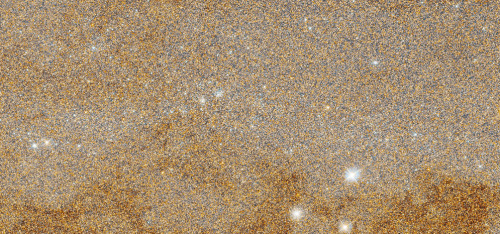
A shot of just a tiny bit of the Andromeda Galaxy, from the sharpest ever view taken by the Hubble Space Telescope
Full size image


These slides, presented during the New Horizons’ press conference at the 47th Lunar and Planetary Science Conference, show the climate zones of Pluto compared to Earth. Pluto has an axial tilt of 120°, which creates extreme tropic and arctic regions. The two regions overlap, creating a ‘tropical arctic’ region that experiences both direct sunlight and prolonged sunlight and darkness. At the moment, Pluto is in an intermediate state between the extreme tropic and arctic climates.
Image Credit: NASA/Johns Hopkins University Applied Physics Laboratory/Southwest Research Institute


SwRI’s Parker discovers moon over Makemake in the Kuiper Belt A Southwest Research Institute-led team has discovered an elusive, dark moon orbiting Makemake, one of the “big four” dwarf planets populating the Kuiper Belt region at the edge of our solar system. The findings are detailed in the paper “Discovery of a Makemakean Moon,” published in the June 27 issue of Astrophysical Journal Letters.
“Makemake’s moon proves that there are still wild things waiting to be discovered, even in places people have already looked,” said Dr. Alex Parker, lead author of the paper and the SwRI astronomer credited with discovering the satellite. Parker spotted a faint point of light close to the dwarf planet using data from Hubble’s Wide Field Camera 3. “Makemake’s moon – nicknamed MK2 – is very dark, 1,300 times fainter than the dwarf planet.”
A nearly edge-on orbital configuration helped it evade detection, placing it deep within the glare of the icy dwarf during a substantial fraction of its orbit. Makemake is one of the largest and brightest known Kuiper Belt Objects (KBOs), second only to Pluto. The moon is likely less than 100 miles wide while its parent dwarf planet is about 870 miles across. Discovered in 2005, Makemake is shaped like football and sheathed in frozen methane.
“With a moon, we can calculate Makemake’s mass and density,” Parker said. “We can contrast the orbits and properties of the parent dwarf and its moon, to understand the origin and history of the system. We can compare Makemake and its moon to other systems, and broaden our understanding of the processes that shaped the evolution of our solar system.”
With the discovery of MK2, all four of the currently designated dwarf planets are known to host one or more satellites. The fact that Makemake’s satellite went unseen despite previous searches suggests that other large KBOs may host hidden moons.
Prior to this discovery, the lack of a satellite for Makemake suggested that it had escaped a past giant impact. Now, scientists will be looking at its density to determine if it was formed by a giant collision or if it was grabbed by the parent dwarf’s gravity. The apparent ubiquity of moons orbiting KBO dwarf planets supports the idea that giant collisions are a near-universal fixture in the histories of these distant worlds.
top Image: illustration shows Makemake’s bright red surface and the inferred darker surface of the moon, known as MK2. Image Courtesy of NASA/SwRI/Alex Parker
lower Image: Different views of the Makemake system taken two days apart. Image Courtesy of NASA/Hubble WFC3/SwRI/Alex Parker
It’s Surprisingly Easy To Brew Something Like RNA In A Puddle
One of the biggest mysteries in science is how you could get life in a place where it doesn’t already exist. Scientists have found some clues, though.
The latest is that Georgia Tech chemist Nicholas Hud was able to create something that looks a lot like RNA — a relative of DNA — using ingredients that would have been common on Earth when it was 4 billion years younger.
The study used two common chemicals left alone in what amounts to a mud puddle. The chemicals synced up and started forming that twisting ladder shape we think of when we picture DNA.
Scientists say this looks like a decent candidate for how simple organisms may have gotten started on Earth, and it wasn’t even all that hard.
Earlier studies have shown you can get some of the building blocks of life in the right situation, like extreme heat or lightning strikes. Some have even been found on asteroids.
The Georgia Tech study shows you don’t even need that much excitement. Swirling puddles could potentially have done the job.
By: Newsy Science.
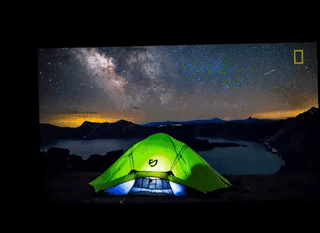
I saw this a long time ago and finally got it to convert to GIF format on tumblr. It shows how it’s the Earth that’s moving, space is standing still. I love this perspective.
-
 amanlikehimher liked this · 2 years ago
amanlikehimher liked this · 2 years ago -
 across-thestars liked this · 3 years ago
across-thestars liked this · 3 years ago -
 focuskumm liked this · 4 years ago
focuskumm liked this · 4 years ago -
 gazmaskelipiyanist liked this · 4 years ago
gazmaskelipiyanist liked this · 4 years ago -
 dalbichigom liked this · 4 years ago
dalbichigom liked this · 4 years ago -
 lettis-novaturient liked this · 4 years ago
lettis-novaturient liked this · 4 years ago -
 too-atmospherically liked this · 4 years ago
too-atmospherically liked this · 4 years ago -
 quick-step reblogged this · 4 years ago
quick-step reblogged this · 4 years ago -
 quick-step liked this · 4 years ago
quick-step liked this · 4 years ago -
 bagel-bby liked this · 4 years ago
bagel-bby liked this · 4 years ago -
 this-new-perspective reblogged this · 4 years ago
this-new-perspective reblogged this · 4 years ago -
 ooooooooooooooops reblogged this · 4 years ago
ooooooooooooooops reblogged this · 4 years ago -
 favoriselovealina liked this · 5 years ago
favoriselovealina liked this · 5 years ago -
 craniumsandcrayons liked this · 5 years ago
craniumsandcrayons liked this · 5 years ago -
 baborus liked this · 5 years ago
baborus liked this · 5 years ago -
 nadinefabre liked this · 5 years ago
nadinefabre liked this · 5 years ago -
 juliecakess liked this · 5 years ago
juliecakess liked this · 5 years ago -
 sweetieaimee liked this · 5 years ago
sweetieaimee liked this · 5 years ago -
 radicalgremlin liked this · 5 years ago
radicalgremlin liked this · 5 years ago -
 5041782936 reblogged this · 5 years ago
5041782936 reblogged this · 5 years ago -
 5041782936 liked this · 5 years ago
5041782936 liked this · 5 years ago -
 yourbadissues-blog liked this · 5 years ago
yourbadissues-blog liked this · 5 years ago -
 tinpigthinksbig liked this · 5 years ago
tinpigthinksbig liked this · 5 years ago -
 allaboutthatswing liked this · 5 years ago
allaboutthatswing liked this · 5 years ago -
 hajar-aamour-blog liked this · 5 years ago
hajar-aamour-blog liked this · 5 years ago -
 lets-go-to-lauderdale liked this · 5 years ago
lets-go-to-lauderdale liked this · 5 years ago -
 haggisns liked this · 5 years ago
haggisns liked this · 5 years ago -
 praxilla liked this · 5 years ago
praxilla liked this · 5 years ago -
 findersfeeders liked this · 5 years ago
findersfeeders liked this · 5 years ago -
 abuthi-mic liked this · 5 years ago
abuthi-mic liked this · 5 years ago -
 ritacaroline reblogged this · 5 years ago
ritacaroline reblogged this · 5 years ago -
 ritacaroline liked this · 5 years ago
ritacaroline liked this · 5 years ago -
 arianajmzv reblogged this · 5 years ago
arianajmzv reblogged this · 5 years ago -
 arianajmzv liked this · 5 years ago
arianajmzv liked this · 5 years ago -
 jazzyrice liked this · 5 years ago
jazzyrice liked this · 5 years ago -
 alejojennifer93 reblogged this · 5 years ago
alejojennifer93 reblogged this · 5 years ago -
 wishing-for-a-pretty-studyblr reblogged this · 5 years ago
wishing-for-a-pretty-studyblr reblogged this · 5 years ago -
 socks-bog-wench liked this · 5 years ago
socks-bog-wench liked this · 5 years ago -
 raptcat reblogged this · 5 years ago
raptcat reblogged this · 5 years ago -
 fortuiti-network-blog liked this · 5 years ago
fortuiti-network-blog liked this · 5 years ago -
 leb-kuchen liked this · 5 years ago
leb-kuchen liked this · 5 years ago

This is a studyblr for everyone have some passion for science, especially astronomy and biology
129 posts
